“Anything you can do I can do better; I can do anything better than you.” is one of the most memorable lines from the song Anything You Can Do which was composed by Irving Berlin for the 1946 Broadway musical, Annie Get Your Gun. The song is a spirited duet, with one male singer and one female singer attempting to out-do each other in increasingly complex tasks.
During the song, they argue playfully about who can, for example, sing louder, sing higher, sing sweeter, and hold a note for longer, and boast of their abilities and accomplishments, such as opening safes and living on bread and cheese.
Sound familiar? it should because it’s what most sales presentations, corporate profiles and business proposals sound like these days. While there’s an element of truth in it, it doesn’t matter. Nobody cares. People (clients and customers) are busy, cynical, and have too many choices. There are others who do what you do (for about the same price, about the same quality, at about the same level of service, and about the same features). Capacity and competency exist and customers have the connections (Internet) to find it. Besides why should they believe you or me just because we say it?
Biological influence
Those with whom we wish to communicate are swamped by a tsunami of information messages all day every day. It’s no wonder we’re cynical about marketing messages, or for that matter, virtually any message that seeks to change something in our lives. Dr. John Media, a molecular biologist and author of Brain Rules, has some useful insight: our brains have continued to evolve over time. The “older” parts of our brain are quick to recognize danger in any form, respond to and remember emotions (this is why stories work when facts and figures don’t) and do not have language ability (“I know what the data says but my gut instincts say otherwise.”) so we get feelings instead. Therefore it’s more important and more useful to lead with our “why story” and let facts and figures follow.
It’s also a question of value. How much is it worth? Way back when – before Google was verb, facts and figures had more value. Here’s a scenario I got from Dan Pink. The year is 1991 and we’ve decided to have a contest between two people. One is the head librarian of Cambridge University in the UK, the other is a 30 year old woman in Tanzania. The contest is who can find the gross domestic product of Ecuador last year first. Whoever gives correct answer first wins. In 1991 who do you bet on? Cut. Fade out. It’s 2010 – 19 years later. The head librarian at Cambridge is still in the same job. That then 30 year old woman now has a 15 year old daughter with high speed Internet connection. Same contest and same question; who you gonna bet on now? So what? Stop and think. Facts have become ubiquitous; have become free; have become easily discovered. If facts and figures are ubiquitous and easily discovered, what’s their value? What matters is putting facts in context and delivering them with emotional impact; in other words, story.
Medina reminds us that the need to belong is a strong and basic human need. We feel it when we’re around those who share our values and beliefs. When we hear companies talk about what they do and how they are better, we may have some interest or they may have an appeal to us, but that doesn’t necessarily mean they represent something to which we want to belong. This natural need to belong makes us pretty good at recognizing things that don’t belong. Our “older” brains may not give us the language to express it, but we get a sense or a feeling when the fit is wrong. Simon Sinek (note video below) provides a great example in his book Start with Why: How Great Leaders Inspire Everyone to Take Action: Apple would say of themselves as a company, “In everything we do, we believe in challenging the status quo. We believe in thinking differently.” That’s where they start, with a why. Their products give life to their cause. Now shift to Dell Computers, a very good computer company. Consumers couldn’t bring themselves to buy very many Dell-branded PDA’s (personal digital assistants) or MP3 players. We saw them as a computer company. We see Apple as a company that, well, “thinks differently” so we’re perfectly comfortable buying computers, smart phones, MP3 players, music, movies, books, routers, and DVR’s from them.
Who is better?
The concept of better begs the question: based on what? Is a Ferrari Enzo better than a Chrysler minivan? It depends on why you need the car.
Think back to the last memo you wrote or presentation you gave. If you followed the traditional model of communication you went through a familiar three-step process: you stated the problem, you analyzed the options, and your conclusion flowed from that analysis. It’s our normal or rational way of communicating, it’s an appeal to reason, a model that has been followed ever since the ancient Greeks. It works fine when the aim is merely to pass on information to people who want to hear it. However, if you’re trying to get humans to change what they’re doing and act in some fundamentally new way or embrace some other change (a better way), it has two serious problems. First, it doesn’t work. And, second, it often makes matters worse. Think about it, giving reasons for a change to people who don’t agree with you isn’t just ineffective, it often deepens the roots of their opposition to what you’re proposing.
Early 1960’s America was near a boiling point of civil rights tension. Those who tried reasonable arguments served to raise the temperature. In August of 1963 Martin Luther King, Jr. spoke to tens of thousands of people on the mall in Washington, D.C. with a message that would resonate for decades to come. How did all those people arrive at the right location to hear the right message on the right day at the right time? No invitations were sent. No web site was available to check the information.
Dr. King was not unique in what he had seen, experienced and felt about growing up and living in a segregated country. He was, however, uniquely gifted in communicating what he believed, his why. He believed that there are two types of laws in this world: those created by God and those created by man and until the laws created by man come into alignment with those created by God we will not live in a just world. The civil rights movement was the perfect vehicle for him to bring his cause to life.
Other people, who believed what he believed, took up his cause and made it their own. The word spread about the speech in Washington. People did not show up for Dr. King, they showed up for themselves – for what they believed. It was about far more than black versus white; 25% of the audience was white. His speech was not about what or how, rather it spoke to why. As Sinek points out, “He gave the ‘I have a dream’ speech not the ‘I have a plan’ speech.”
People don’t buy what you do, they buy why you do it.
In Other Words…
“If ya ain’t got it in ya, ya can’t blow it out ya.” – Louis Armstrong
“It is useless to attempt to reason a man out of what he was never reasoned into.” – Jonathan Swift
“To know what everyone knows is to know nothing.” – Remy de Gourmont
“’Tell me a story’ still comprises four of the most powerful words in the English language.” – Pat Conroy
“Simply pushing harder within the old boundaries will not do.” – Karl Weick
“The one who tells the stories rules the world.” – American Indian Saying
“There is nothing worse than a brilliant image of a fuzzy concept.” – Ansel Adams
“So much has already been written about everything that you can’t find out anything about it.” – James Thurber
In The Word…
Above all else, guard your heart, for it is the wellspring of life. Proverbs 4:23
My mouth will speak words of wisdom; the utterance from my heart will give understanding. Psalm 49:3






